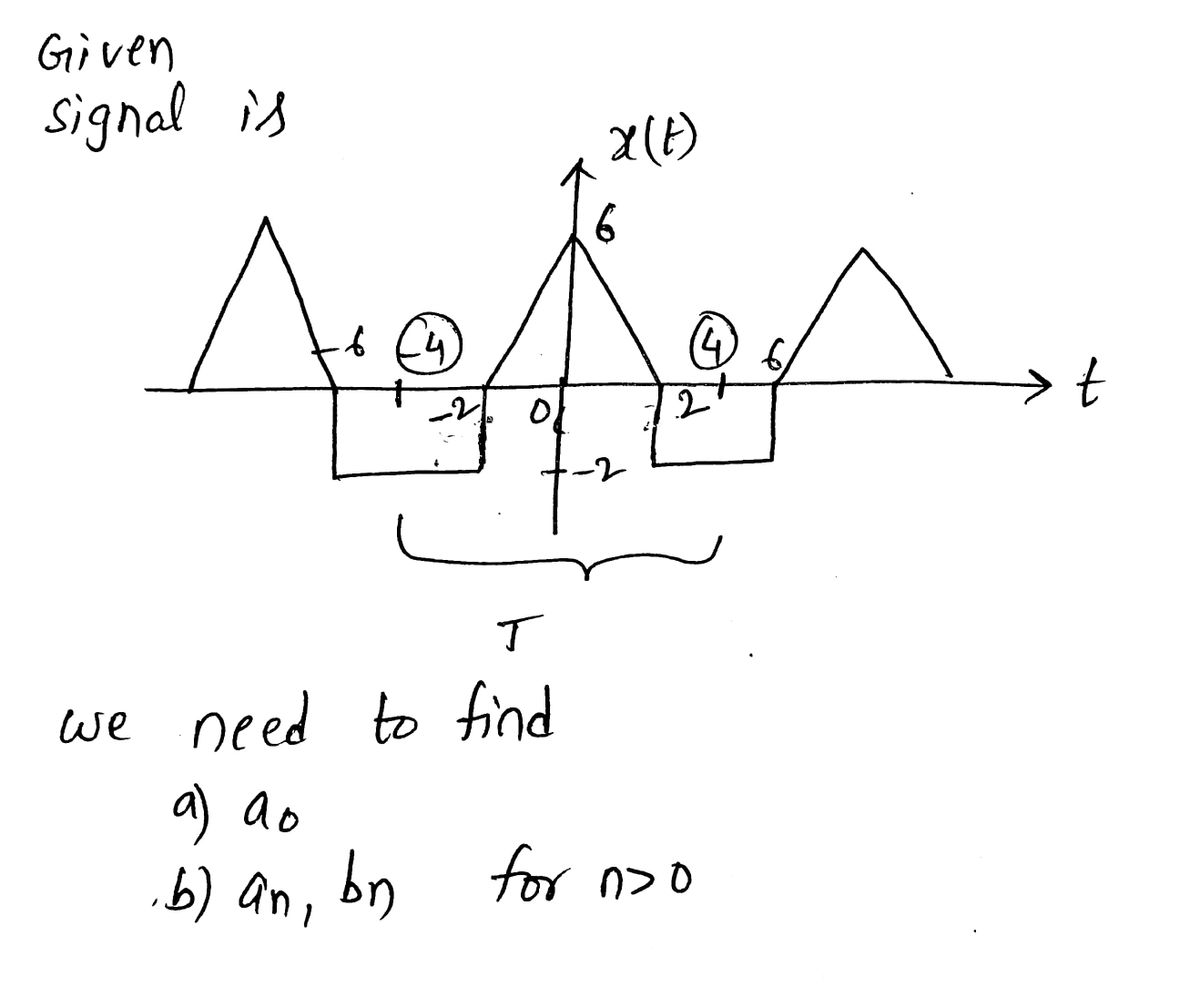TFS Set up the ETS coefficients for the following signal - no need to complete the integration, as I am just checking for proper set up, including limits, notation, etc. Write in general terms of fundamental frequency, i.e., @o, however, at some point, you must clearly define the value of a base on the graph below. a) b) What is ao? 6 4 2 -6-4-2 What are an and bn for n >0? x(t) 246
TFS Set up the ETS coefficients for the following signal - no need to complete the integration, as I am just checking for proper set up, including limits, notation, etc. Write in general terms of fundamental frequency, i.e., @o, however, at some point, you must clearly define the value of a base on the graph below. a) b) What is ao? 6 4 2 -6-4-2 What are an and bn for n >0? x(t) 246
Introductory Circuit Analysis (13th Edition)
13th Edition
ISBN:9780133923605
Author:Robert L. Boylestad
Publisher:Robert L. Boylestad
Chapter1: Introduction
Section: Chapter Questions
Problem 1P: Visit your local library (at school or home) and describe the extent to which it provides literature...
Related questions
Question
100%

Transcribed Image Text:**Exercise: Fourier Series Coefficients**
**Task:** Set up the Fourier Series (FS) coefficients for the following signal. No need to complete the integration, as this exercise focuses on proper setup, including limits, notation, etc. Write in general terms of fundamental frequency, i.e., \(\omega_0\). However, at some point, you must clearly define the value of \(\omega_0\) based on the graph below.
**Diagram Description:**
The signal \(x(t)\) is a periodic triangular waveform ranging from \(-6\) to \(6\) along the x-axis (time) and from \(-2\) to \(6\) along the y-axis (amplitude). The waveform peaks at \(6\), hits a minimum at \(-2\), and repeats every \(8\) units.
**Questions:**
a) What is \(a_0\)?
b) What are \(a_n\) and \(b_n\) for \(n > 0\)?
Expert Solution
Step 1

Trending now
This is a popular solution!
Step by step
Solved in 3 steps with 3 images

Knowledge Booster
Learn more about
Need a deep-dive on the concept behind this application? Look no further. Learn more about this topic, electrical-engineering and related others by exploring similar questions and additional content below.Recommended textbooks for you

Introductory Circuit Analysis (13th Edition)
Electrical Engineering
ISBN:
9780133923605
Author:
Robert L. Boylestad
Publisher:
PEARSON

Delmar's Standard Textbook Of Electricity
Electrical Engineering
ISBN:
9781337900348
Author:
Stephen L. Herman
Publisher:
Cengage Learning

Programmable Logic Controllers
Electrical Engineering
ISBN:
9780073373843
Author:
Frank D. Petruzella
Publisher:
McGraw-Hill Education

Introductory Circuit Analysis (13th Edition)
Electrical Engineering
ISBN:
9780133923605
Author:
Robert L. Boylestad
Publisher:
PEARSON

Delmar's Standard Textbook Of Electricity
Electrical Engineering
ISBN:
9781337900348
Author:
Stephen L. Herman
Publisher:
Cengage Learning

Programmable Logic Controllers
Electrical Engineering
ISBN:
9780073373843
Author:
Frank D. Petruzella
Publisher:
McGraw-Hill Education

Fundamentals of Electric Circuits
Electrical Engineering
ISBN:
9780078028229
Author:
Charles K Alexander, Matthew Sadiku
Publisher:
McGraw-Hill Education

Electric Circuits. (11th Edition)
Electrical Engineering
ISBN:
9780134746968
Author:
James W. Nilsson, Susan Riedel
Publisher:
PEARSON

Engineering Electromagnetics
Electrical Engineering
ISBN:
9780078028151
Author:
Hayt, William H. (william Hart), Jr, BUCK, John A.
Publisher:
Mcgraw-hill Education,